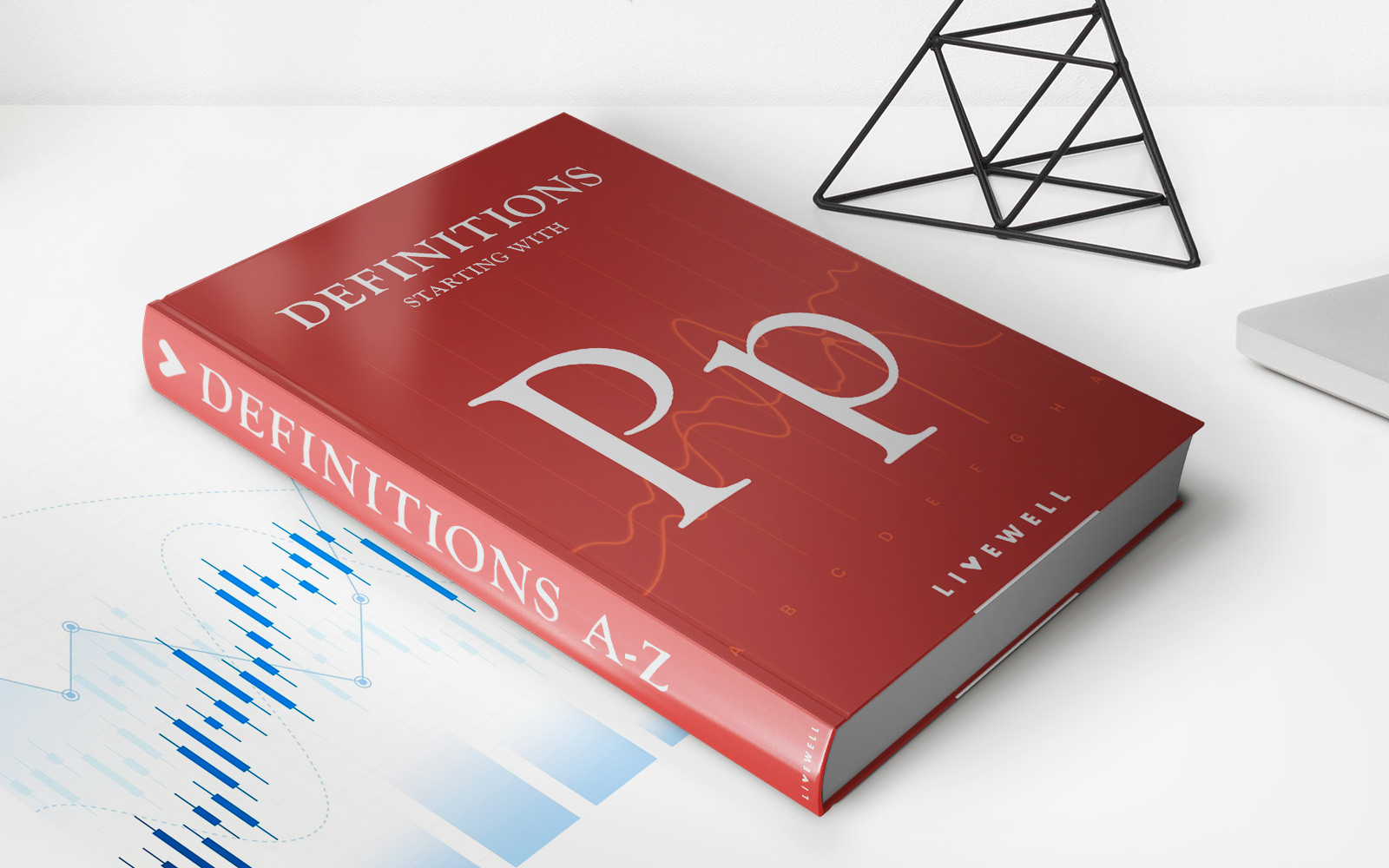

Finance
How Much Does Shipping Insurance Cost
Modified: February 21, 2024
Find out the cost of shipping insurance and manage your finances effectively. Protect your shipments with affordable insurance options.
(Many of the links in this article redirect to a specific reviewed product. Your purchase of these products through affiliate links helps to generate commission for LiveWell, at no extra cost. Learn more)
Table of Contents
Introduction
Shipping insurance is an essential component of the logistics process, offering protection and peace of mind to both shippers and recipients. Whether you are shipping an expensive item or a fragile package, having insurance coverage ensures that you are financially safeguarded in case of loss, damage or theft during transit.
However, one common concern among shippers is the cost of shipping insurance. Determining the cost can be a complex task, as it depends on various factors such as the value of the shipment, the destination, shipping method, and the level of coverage. In this article, we will explore the different factors that influence shipping insurance costs and offer tips to help you minimize these expenses without compromising on protection.
When calculating shipping insurance cost, it’s important to consider the value of the goods being shipped. Higher value items naturally require a higher insurance premium since the potential loss or damage would result in greater financial loss. For example, shipping a diamond necklace will incur a higher insurance cost compared to shipping a set of books.
The destination of the shipment is also a significant factor in determining the insurance cost. Shipping to regions with higher incidences of theft or damage may result in higher insurance rates. Additionally, international shipments may have different insurance regulations and requirements, which can impact the cost.
Another factor to consider is the shipping method chosen. Different carriers offer varying levels of insurance, and the cost may vary accordingly. For example, shipping via air freight typically results in higher insurance rates compared to ground or sea freight due to faster transit time and increased risk of damage.
Additionally, the level of insurance coverage you select will impact the cost. Basic coverage may be cheaper, but it might not provide comprehensive protection against all risks. Opting for higher coverage will result in a higher premium, but it offers enhanced peace of mind and financial protection in case of loss, damage, or theft.
Insurance providers also play a role in determining the cost. Different companies have different pricing structures and policies. It’s essential to compare rates and coverage options from multiple insurance providers to ensure you are getting the best value for your money.
In the next sections, we will delve deeper into the different types of shipping insurance, coverage options available, and provide tips on how to reduce shipping insurance costs while maintaining adequate protection for your valuable shipments.
Factors Influencing Shipping Insurance Cost
When it comes to shipping insurance, several factors come into play to determine the cost. Understanding these factors will help you assess your insurance needs and budget accordingly. Here are the key elements that influence shipping insurance costs:
- Value of the Shipment: The higher the value of the goods being shipped, the higher the insurance cost. This is because the potential loss or damage would result in a greater financial loss for the shipper.
- Destination: The destination of the shipment plays a significant role in determining the insurance cost. Shipping to locations with a higher risk of theft or damage can result in higher premiums.
- Shipping Method: The shipping method chosen can impact the insurance cost. Air freight, for example, often incurs higher insurance rates compared to ground or sea freight due to faster transit times and increased risk of damage.
- Type of Goods: Some types of goods are inherently more valuable or susceptible to damage. Fragile or high-value items may require additional coverage, which can add to the insurance cost.
- Mode of Transportation: The mode of transportation used for shipping can affect the insurance cost. Each mode carries its own risks and insurance requirements, such as cargo ships needing marine cargo insurance.
- Insurance Coverage Level: The level of insurance coverage selected will impact the cost. Basic coverage may be cheaper but may not offer comprehensive protection against all risks. Opting for higher coverage will result in a higher premium but provide enhanced peace of mind and financial protection.
- Insurance Provider: Different insurance providers have varying pricing structures and policies. It’s crucial to compare rates and coverage options from multiple providers to ensure you are getting the best value for your money.
It’s important to note that while these factors influence the cost of shipping insurance, they also contribute to the overall risk assessment. Insurance providers consider these factors to determine the likelihood of a claim being made and the potential payout that would be required.
Now that we understand the factors that influence shipping insurance costs, let’s explore the different types of shipping insurance available and the coverage options they offer.
Types of Shipping Insurance
Shipping insurance comes in various forms, each designed to cater to different shipping scenarios and provide specific coverage options. Understanding the types of shipping insurance available will help you choose the right one to protect your shipments. Here are the most common types:
- Full-Value Coverage: This type of insurance provides coverage for the full declared value of the shipment. In the event of loss or damage, the insurance company will reimburse the shipper for the full value of the goods, including shipping costs.
- Declared Value Coverage: With this type of insurance, the shipper declares the value of the shipment, and the insurance company provides coverage up to that declared value. If the shipment is lost or damaged, the insurance company will reimburse the shipper for the declared value.
- Third-Party Liability Coverage: This type of insurance protects against claims from third parties for bodily injury or property damage caused by the shipment. It is particularly important for businesses involved in shipping hazardous materials or large, heavy items that could potentially cause accidents or property damage during transit.
- Inland Marine Insurance: Also known as cargo insurance, this type of insurance covers the transportation of goods over land, protecting against loss or damage during transit. It typically includes coverage for theft, damage, and accidents.
- International Shipping Insurance: For businesses involved in international trade, international shipping insurance is crucial. It provides coverage for shipments traveling across borders and protects against risks such as customs delays, political unrest, or damage during international transit.
- Specialized Insurance: Certain industries may require specialized insurance coverage to protect against specific risks. For example, fine arts insurance provides coverage for valuable artwork, while perishable goods insurance offers protection for shipments of perishable items such as food or pharmaceuticals.
It’s important to carefully review the terms and conditions of each type of insurance policy to ensure it meets your specific needs. Consider the nature of your shipments, the value of the goods, and any industry-specific risks that may require specialized coverage.
Now that we have explored the different types of shipping insurance available, let’s move on to understanding the coverage options provided by these insurance policies.
Coverage Options
Shipping insurance offers various coverage options to protect your shipments against a range of risks. Understanding these options will help you choose the appropriate level of coverage based on your specific needs. Here are some common coverage options provided by shipping insurance policies:
- Loss/Damage Coverage: This coverage protects against the loss or damage of the shipment during transit. If the shipment is lost, damaged, or stolen, the insurance company will provide compensation up to the insured value.
- Theft and Pilferage Coverage: This coverage specifically protects against theft or pilferage during the shipping process. It provides financial reimbursement if the shipment is stolen or if items are removed without authorization.
- Damage During Handling: This coverage protects against damage that occurs during the handling and transportation of the goods. It applies to both mechanical damage (e.g., dropping or mishandling) and environmental damage (e.g., exposure to extreme temperatures or moisture).
- Customs Duty Coverage: With this coverage option, the insurance company reimburses the shipper for any customs duties paid on damaged or lost goods. This is particularly important for international shipments, where customs duties can be significant.
- Exclusions and Limitations: Shipping insurance policies often come with certain exclusions and limitations. These can include specific types of goods or circumstances that are not covered by the policy. It’s essential to thoroughly review these exclusions and limitations to understand the extent of coverage provided by the insurance policy.
- Additional Coverage: In addition to the standard coverage options, insurance providers may offer additional coverage for specific needs. For example, you may be able to add coverage for consequential loss (loss of profits due to shipment delays) or coverage for specific high-value items that require special attention.
When selecting a shipping insurance policy, carefully review the coverage options provided and assess their relevance to your shipments and potential risks. Consult with the insurance provider to understand any specific terms and conditions associated with the coverage options.
Now that we have explored the coverage options provided by shipping insurance policies, let’s move on to comparing the costs of different shipping insurance providers.
Cost Comparison of Shipping Insurance Providers
When it comes to shipping insurance, comparing costs and coverage options from different providers is essential to ensure you get the best value for your money. While the cost of shipping insurance is influenced by various factors, such as the value of the shipment and the desired coverage level, different insurance providers may offer different rates and pricing structures.
Here are some steps you can take to compare the costs of shipping insurance providers:
- Gather Quotes: Contact multiple insurance providers and request quotes for the same shipment. Provide them with the necessary details, such as the value of the goods, destination, and desired coverage level. This will help you directly compare the cost of insurance from different companies.
- Consider Coverage Options: While comparing costs, also consider the coverage options provided by each insurance provider. Ensure that the coverage offered meets your specific needs and provides adequate protection for your shipments.
- Review Policy Terms and Conditions: Carefully read through the policy terms and conditions of each insurance provider. The cost of insurance is important, but it’s equally important to understand what is covered, any exclusions or limitations, and the claims process.
- Look for Discounts or Bundled Services: Some insurance providers may offer discounts based on factors such as the volume of shipments or long-term contracts. Additionally, check if any bundled services are available, where insurance is included as part of a broader logistics or shipping package.
- Consider Reputation and Reliability: While cost is important, it’s also crucial to consider the reputation and reliability of the insurance provider. Look for reviews, feedback from other customers, and their track record in handling claims and providing support.
- Evaluate Customer Service and Support: Prompt and efficient customer service and support are crucial when dealing with shipping insurance. Consider the responsiveness and helpfulness of the insurance provider’s customer service team when comparing costs.
By following these steps and comparing costs, coverage options, and other factors, you can make an informed decision when choosing a shipping insurance provider. Remember, it’s not just about getting the cheapest option, but also ensuring that you receive reliable coverage and support for your shipments.
Now that we have explored the cost comparison aspect of shipping insurance, let’s move on to learning some tips for reducing the cost of shipping insurance.
Tips for Reducing Shipping Insurance Cost
While shipping insurance is crucial for protecting your shipments, there are ways to reduce the cost without compromising on coverage. Here are some helpful tips to help you lower your shipping insurance expenses:
- Improve Packaging: Proper packaging plays a significant role in preventing damage during transit. Invest in high-quality packaging materials that provide adequate cushioning and protection for your goods. By minimizing the risk of damage, you can potentially lower your insurance premiums.
- Accurate Declared Value: Ensure that you accurately declare the value of your shipment. Overvaluing your goods may result in higher insurance costs, while undervaluing them can lead to inadequate coverage. Provide supporting documentation, such as invoices or appraisals, to justify the declared value.
- Choose a Higher Deductible: A deductible is the amount you have to pay out of pocket before the insurance coverage kicks in. Opting for a higher deductible can lower your insurance premium. Assess the risk involved and consider if a higher deductible is financially feasible for your business.
- Track and Monitor Shipments: Implement tracking and monitoring systems to keep a close eye on your shipments. This helps minimize the risk of loss or theft and may lead to lower insurance premiums as it demonstrates proactive risk management practices to insurance providers.
- Consolidate Shipments: If possible, consolidate multiple smaller shipments into a single larger shipment. Shipping larger consolidated shipments often results in lower insurance costs as hazardous or fragile goods are bundled together, reducing overall risk and insurance requirements.
- Compare Insurance Providers: As mentioned earlier, comparing insurance providers allows you to find the best rates and coverage options. Take the time to research and obtain quotes from different insurance companies to ensure you are getting the most competitive pricing for your shipping needs.
- Utilize Negotiation Power: If you have a large shipping volume or are a repeat customer, leverage your negotiation power to secure favorable insurance rates. Insurance providers may be willing to offer discounts or customized pricing packages based on your business needs.
- Consider Self-Insurance: Depending on your business’s risk tolerance and financial capacity, self-insurance may be an option. Instead of paying premiums to an insurance provider, you set aside funds to cover potential losses internally. This allows you to have more control over costs, but it also means assuming more risk.
- Regularly Review Your Needs: Regularly reassess your shipping insurance needs to ensure you have the appropriate coverage. As your business grows or your shipping requirements change, your insurance needs may evolve as well. Make sure you are not overinsured or underinsured, as both can result in unnecessary costs.
By implementing these tips, you can effectively manage and reduce your shipping insurance costs while still safeguarding your shipments. Remember to strike a balance between cost savings and maintaining adequate coverage for your valuable goods.
Now, let’s wrap up our discussion on shipping insurance and summarize the key points we have covered.
Conclusion
Shipping insurance is a vital aspect of the logistics process, providing protection and peace of mind for shippers and recipients. While the cost of shipping insurance can vary based on factors such as the value of the shipment, destination, and desired coverage level, there are steps you can take to reduce these expenses without compromising on protection.
Factors that influence shipping insurance costs include the value of the shipment, destination, shipping method, type of goods being shipped, and the coverage level selected. Understanding these factors allows you to assess your insurance needs and budget accordingly.
There are different types of shipping insurance available, including full-value coverage, declared value coverage, third-party liability coverage, inland marine insurance, international shipping insurance, and specialized insurance. Each type caters to different shipping scenarios and provides specific coverage options.
When selecting a shipping insurance policy, consider the coverage options provided, review the policy terms and conditions, and compare quotes from different insurance providers. It’s important to strike a balance between cost and coverage, ensuring that you receive reliable protection and support for your shipments.
To reduce shipping insurance costs, you can improve packaging, accurately declare the value, choose a higher deductible, track and monitor shipments, consolidate shipments, compare insurance providers, utilize negotiation power, consider self-insurance, and regularly review your needs.
By implementing these tips and considering the unique needs of your business, you can effectively manage your shipping insurance expenses while maintaining adequate coverage for your valuable shipments.
Remember, shipping insurance is an investment in the security of your goods during transit. It provides financial protection in case of loss, damage, or theft, ensuring that your business operations run smoothly and your customers receive their orders in the best condition possible.
Now that you have a better understanding of shipping insurance costs and ways to reduce them, you can make informed decisions when it comes to protecting your shipments and ensuring the success of your logistics process.














